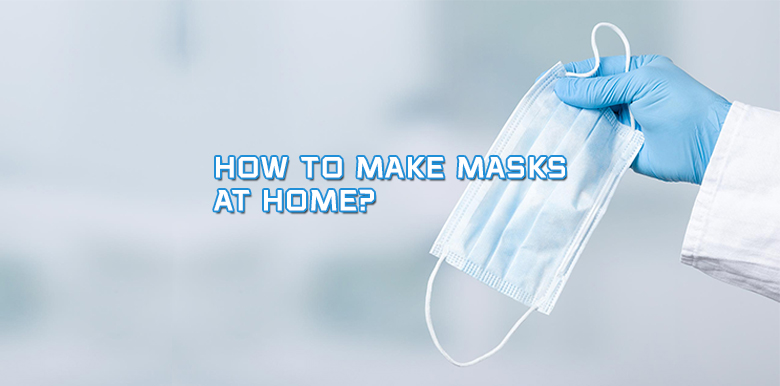A covering made of fibre or gauze and fitting over the nose and mouth to protect against air pollutants, or made of sterile gauze and worn to prevent infection of the wearer or (in surgery) of the patient.
Different kind of masks –
1. N95 masks – This is the most widely used air pollution mask. It is intolerant to oil and is ineffective in oily environments. N95 respirators are effective against bacteria and fine suspended dust. This masks usually have more than one layer of filtration. Some masks have a valve to let out exhaled air. It is needed to prevent moisture from getting trapped inside the mask.
2. N99 and N100 masks – These masks are more powerful than the N95 mask. The N99 can remove up to 99% particles as small as 0.3 micron. N99 and N100 masks have multiple stages of filtration. The N99 mask by Repeller, for instance, has a triple filter system. The first layer traps coarse particles like PM 10, hair and sand. The second layer is a custom-made 3-ply micro-particulate filter which removes PM 2.5 down to 0.3 micron. The final innermost layer is made of activated carbon, and combats gaseous impurities like VOCs and foul smells. Some models have exhalation valves for keeping the mask cool and facilitating freer air flow during exhalation. The valve also prevents accumulation of carbon dioxide inside the mask which can be fatal. N99 and N100 masks are more effective against disease-causing germs and fine particulate matter as small as 0.3 micron. They are excellent for guarding against pollution on roads, construction sites and quarries. They are also suitable for high-risk groups like children, pregnant women, the elderly and people with respiratory problems.
COVID19 is spread from person-to-person in droplets of moisture, mucus and saliva from people with infections. Coughing, sneezing, and even normal breathing put these virus particles into the air. One sneeze can put out thousands of droplets.
People standing less than 6 feet away may become covered with these virus particles while they are still in the air. After the droplets fall, the virus particles can remain active for up to nine days.
Infection occurs when someone breathes in airborne droplets, or when they touch their mouth, nose or eyes with hands covered in virus particles that have fallen out of the air onto counters, hand rails, floors or other surfaces.
Wearing a face mask stops people from becoming infected in two ways:
1) By blocking most airborne droplets filled with virus from being inhaled
2) By stopping the wearer from touching their own mouths and noses.
How to make mask at home –
Fabric – The best fabric for homemade masks is a tightly woven, 100% cotton fabric. Things like denim, bed sheets, and heavyweight shirts are all good options.
Things that you will need –
1. 2 layers of High thread count bed sheets lined with flannel or 100% cotton t-shirt material would also work.
2. 1/4 yard of double gauze
3. 6″ length of pipe cleaner
4. 17″ elastic for large sized mask
Steps –
1. Place 2 layers of double gauze or the mask LINING on your mat. Attach the pipe cleaner to the top of the mask. ‘Wrap’ the ends of the wire with a zig zag stitch set at. 2 stitch length, then switched to stitch length 1.7 to baste down the rest of the pipe cleaner, then back to .2 for the opposite end of the wire. The wire will be on the exterior of the lining so if it rusts, it can be removed & replaced.
2. Next, pin your 14″ double fold binding ties a scant 1″ down from the top & up from the bottom on each side of the lining. If using elastic, I use binding clips to hold it in place. Then place your exterior layers on top and start stitching on the bottom (the side opposite the pipe cleaners) about 2″ from the edge. Stopping to pivot at each corner with the needle down, stitch all the way around the fabric, stopping 2-3″ from the starting stitch. Clip your corners to reduce bulk.
3. Turn your mask right side out by pulling through the opening. Press flat & pin your opening shut.
4. Stitch 1/8″ away from the edge all the way around the mask. Stitch ABOVE the pipe cleaner, forcing it down onto what will be the inside of the mask. The inside should NEVER be used as the outside, even after sterilization.
Masks as a fashion statement –
One show at Paris Fashion Week proved to be unintentionally timely as models wore a range of outfits complete with matching facemasks.
The outfits were shown earlier this week by French designer Marine Serre. The catwalk show took place amid rising concern about the outbreak of coronavirus, which caused markets to fall around the world on Friday.
But Serre’s collection was designed before the outbreak, and she has used facemasks in her collections before.
Her previous show in September also saw models cover their faces with veils or facemasks as part of the designer’s spring/summer collection.
